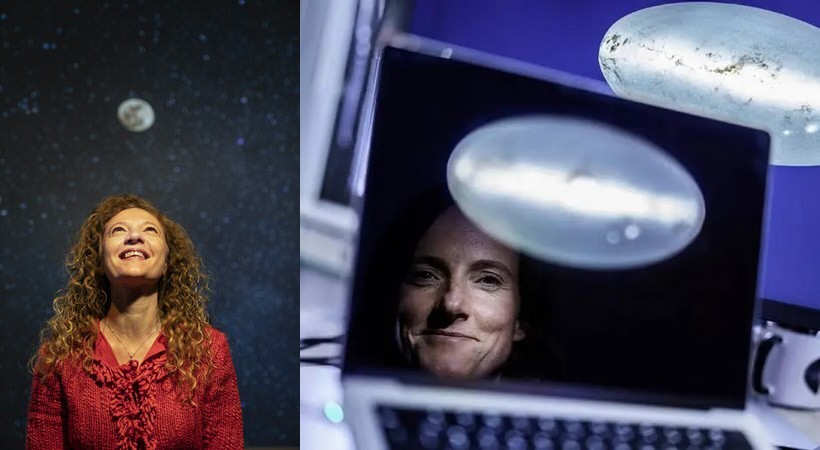Thousands of eyes on the sky: 4MOST sees first light

A new astronomical instrument will observe more than 25 million different cosmic objects over the next five years. This 4-metre Multi-Object Spectroscopic Telescope (4MOST) has just completed its first test observations. The instrument is intended to unravel our galactic history, investigate dark matter and study the origin of stars. 4MOST is installed on the Visible and Infrared Survey Telescope for Astronomy (VISTA) in Chile. Dutch researchers, including those from the University of Groningen, play an important role in the project.
FSE Science Newsroom / NOVA
Whereas many telescope instruments observe objects one by one, 4MOST is designed to capture the light from thousands of sources simultaneously. It does this using more than 2,400 thin optical fibres, each as thick as a human hair. The light is guided through these glass fibres to three separate spectrographs, which split it into up to 18,000 colour components. In this way, the device measures an extensive spectrum from each source, most of which lies within the visible light. This enables astronomers to determine the properties of cosmic sources, such as their chemical composition, speed, and distance from Earth.
The first observations with 4MOST were made last weekend. During the test, 4MOST collected spectra from stars in our Milky Way and from more than a thousand other galaxies. The number of objects it can observe simultaneously, its large field of view, and the large number of spectral colours it can record at the same time make the instrument unique. With a single observation, 4MOST can serve ten or more scientific studies simultaneously.

Research on the Milky Way
Astronomers at the University of Groningen are using the 4MOST observations to obtain the most complete dynamic three-dimensional model of our Milky Way possible. To this end, they are combining data with previous observations from the Gaia satellite, which collected information on nearly two billion stars between 2013 and 2025.
Else Starkenburg is an associate professor at the Kapteyn Institute of the University of Groningen and, together with her colleagues, focuses on stars in the outer regions of the Milky Way. These are very old stars. Observations of them by 4MOST will hopefully answer questions about the early days of the Milky Way, but also about the early structure of the universe in general. ‘For me, it is a fantastic prospect to be able to study the Milky Way in such detail. In addition to data on the movement of stars, 4MOST also provides information about the elements in their atmospheres. This allows us to accurately determine the history of our galaxy,’ says Starkenburg.
University of Groningen professor Amina Helmi was one of the founders of 4MOST. ‘It became clear to me and a number of colleagues early on that information about the chemical composition of stars is important for unravelling the history of the Milky Way. That is what 4MOST will provide in large numbers. I have been looking forward to this for a very long time.’
Evolution of galaxies and dark matter
During a planned five-year study, 4MOST is expected to capture spectra from more than 25 million different sources, spread over an area larger than 60,000 full moons. 4MOST not only analyses the Milky Way, but the instrument also shows how other galaxies form and evolve. Furthermore, it can shed light on the invisible dark matter found in and between galaxies. Finally, astronomers use the instrument to study the evolution of the universe itself, by observing how it expands and changes over time.
The 4MOST facility was designed and built by a consortium of thirty universities and research institutes in Europe and Australia, led by the Leibniz Institute for Astrophysics Potsdam (AIP). Roelof de Jong is project leader and principal investigator of 4MOST and head of the Galaxy Department at AIP. He notes: ‘It's incredible to see the first spectra from our new instrument. The data looks fantastic and bodes well for all the different scientific projects we want to carry out.’
The Optical/Infrared Lab of the Netherlands Research School for Astronomy (NOVA) contributed to the calibration system of 4MOST. This system generates the reference against which all measurements of stars are calibrated. A stable spectrum is generated using spectral lamps and a line spectrum from a laser beam. This enables 4MOST to detect subtle colour changes in the spectrum of stars.
More news
-
11 December 2025
Stormy planets and an unexpected atmosphere
-
09 December 2025
Faculty of Impact Grant for new brain cancer treatment
